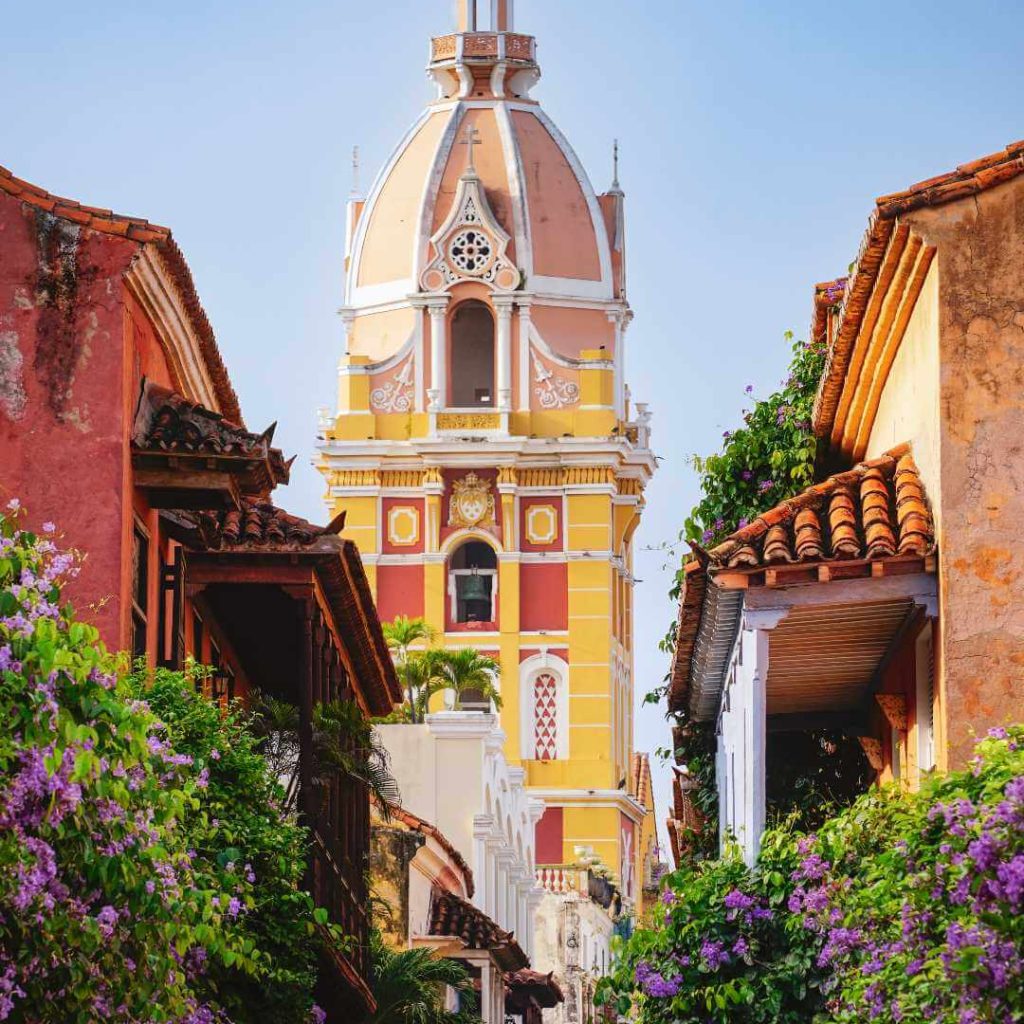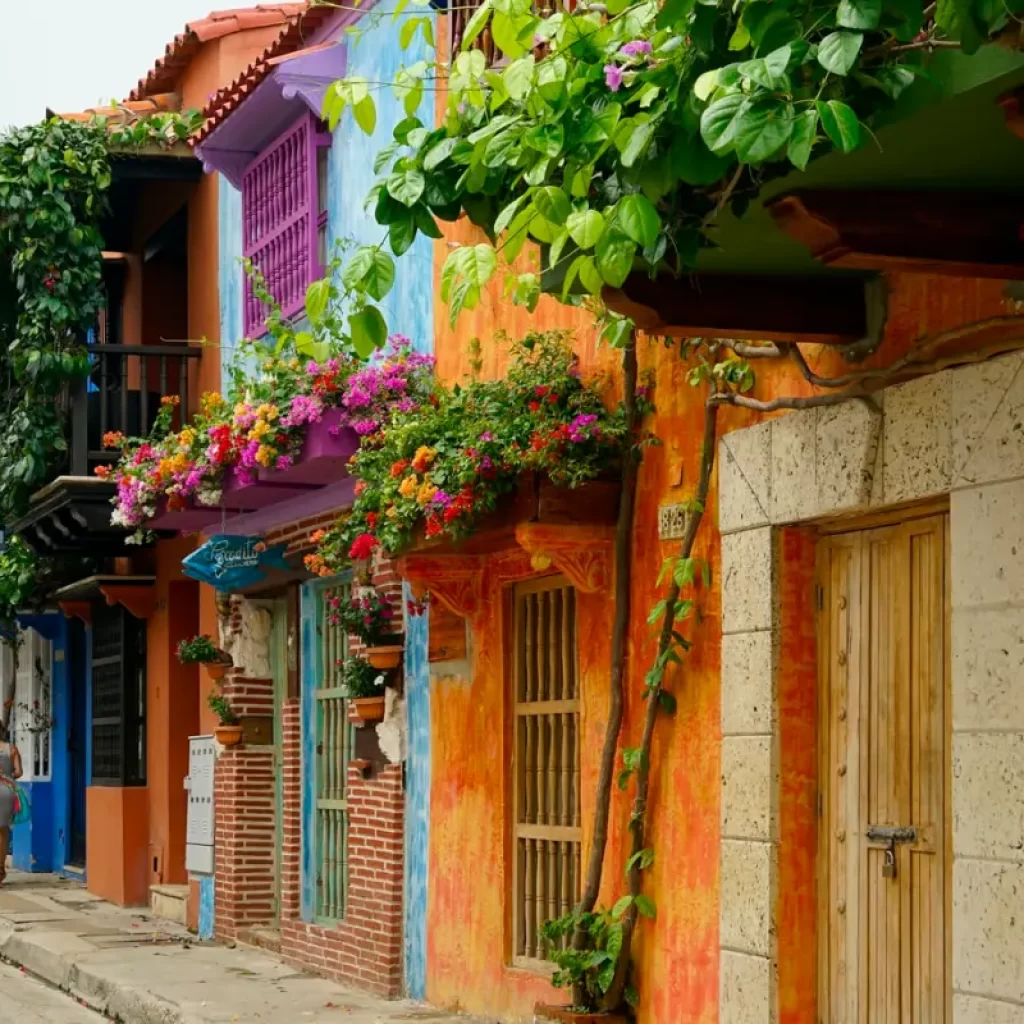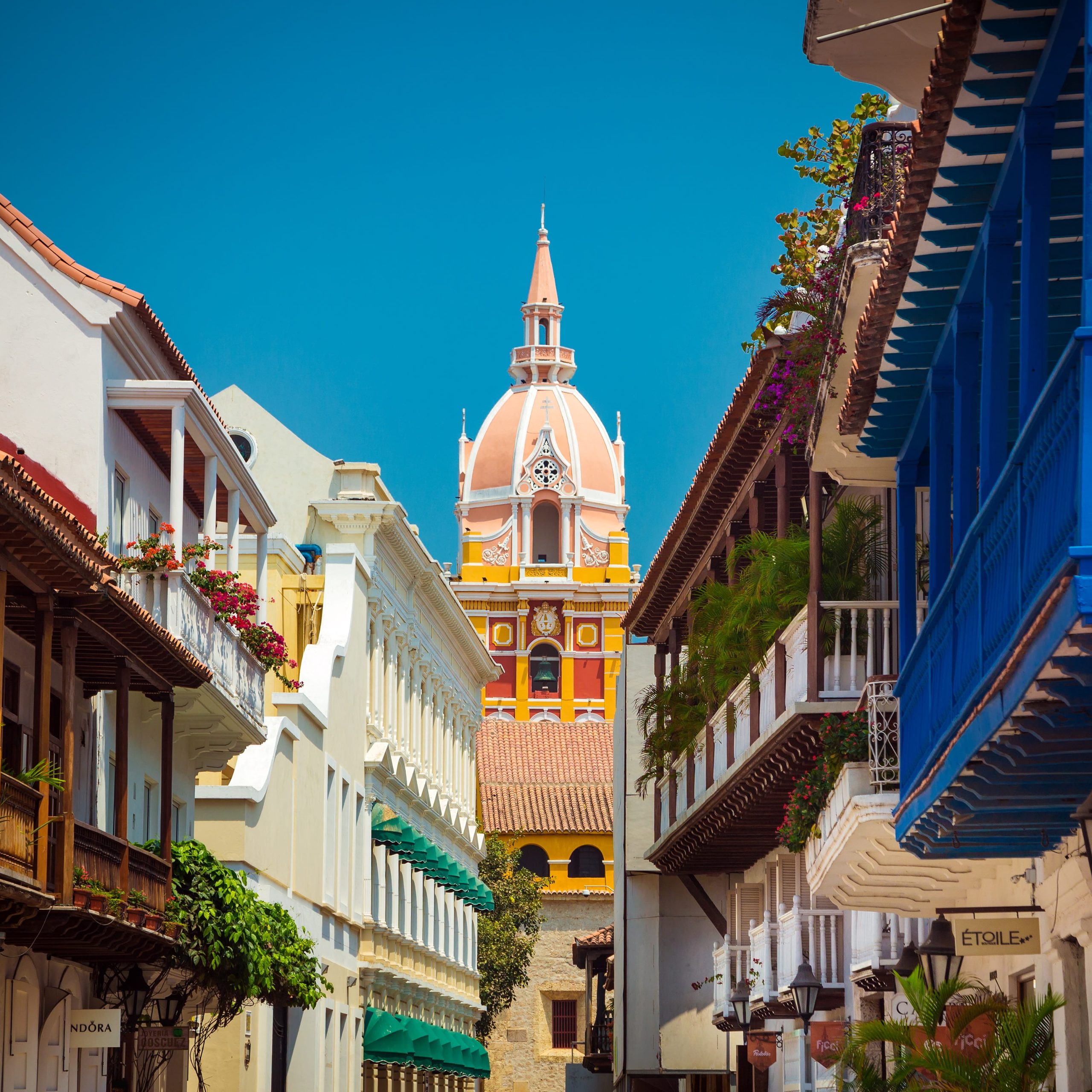The Walled City
Undoubtedly the biggest tourist attraction of Cartagena de Indias is its old town surrounded by its wall. It includes the neighborhoods of Centro and San Diego. Here you can stroll through its streets and admire its churches, its monasteries and convents, its lively squares, its great variety of colonial buildings and palaces, and its colorful houses with their characteristic balconies with flowers.

The Clock Tower
One of the great icons of the city. It is the connection point between the walled city and the lively neighborhood of Getsemaní. An impressive construction attached to the wall and topped by a bright yellow tower and its inseparable clock. It was originally called Boca del Puente and was built as the main entrance to the walled city. The lateral arches were used as a chapel and armament room.
We could say that this is the main entrance to the old town. And what an entrance, since as soon as we pass through the door of the tower we find the beautiful Plaza de los Coches. One of the most beautiful in Cartagena. Although I assure you that it has a lot of competition, they are all super nice.

Cathedral of Cartagena de Indias
Visible almost from any part of the historic walled center, the Cathedral of Santa Catalina de Alejandría is considered one of the oldest in America. Ancient and also colorful. Its great dome in salmon and yellow tones is one of the most photogenic of the city. It stands out for the pulpit built in marble and for its high altar of golden wood that is often compared to that of the cathedral of Mexico.
Like many cathedrals, this is a basilica, a church composed of 3 naves or elongated spaces separated by columns in the direction of the altar. It is a masterpiece of the master builder Simon Gonzalez who designed it on the model of some Andalusian basilicas and the Canary Islands. Construction began in 1577, although it was only finished 84 years later after overcoming incredible adversities.

Getsemaní Neighborhood
It is located very close to the city walls and offers a more authentic version of Cartagena de Indias. Here the colorful low houses are mixed with murals of incredible quality and small art stores.
A true open-air museum that is a joy to walk through. The walking tour can begin in the Plaza de la Santísima Trinidad from where some of the most beautiful narrow streets start, such as La Sierpe, San Juan or Calle del Espíritu Santo.




массовый пошив одежды [url=https://miniatelie.ru/]https://miniatelie.ru/[/url] .
пошив толстовок оптом [url=https://www.miniatelie.ru]https://www.miniatelie.ru[/url] .
What is mirror life? Scientists are sounding the alarm
https://www.advokates.in.ua/index.php/ru/uslugi-advokata/voennye-dela
Военный адвокат Запорожье
[img]https://advokats-zp.com.ua/wp-content/uploads/elementor/thumbs/-%D0%90%D0%B4%D0%B2%D0%BE%D0%BA%D0%B0%D1%82-%D0%97%D0%B0%D0%BF%D0%BE%D1%80%D0%BE%D0%B6%D1%8C%D0%B53-q192no85jfgs5nb51mwbf2t4du4lf4nohwdjrhm2xs.webp[/img]
[url=https://advokaty.zp.ua/]Военный адвокат Запорожье[/url]
Scientist Kate Adamala doesn’t remember exactly when she realized her lab at the University of Minnesota was working on something potentially dangerous — so dangerous in fact that some researchers think it could pose an existential risk to all life forms on Earth.
She was one of four researchers awarded a $4 million US National Science Foundation grant in 2019 to investigate whether it’s possible to produce a mirror cell, in which the structure of all of its component biomolecules is the reverse of what’s found in normal cells.
The work was important, they thought, because such reversed cells, which have never existed in nature, could shed light on the origins of life and make it easier to create molecules with therapeutic value, potentially tackling significant medical challenges such as infectious disease and superbugs. But doubt crept in.
“It was never one light bulb moment. It was kind of a slow boiling over a few months,” Adamala, a synthetic biologist, said. People started asking questions, she added, “and we thought we can answer them, and then we realized we cannot.”
The questions hinged on what would happen if scientists succeeded in making a “mirror organism” such as a bacterium from molecules that are the mirror images of their natural forms. Could it inadvertently spread unchecked in the body or an environment, posing grave risks to human health and dire consequences for the planet? Or would it merely fizzle out and harmlessly disappear without a trace?